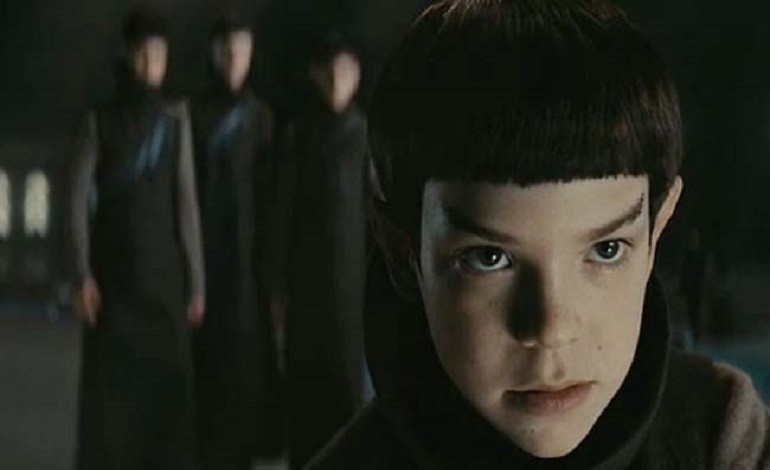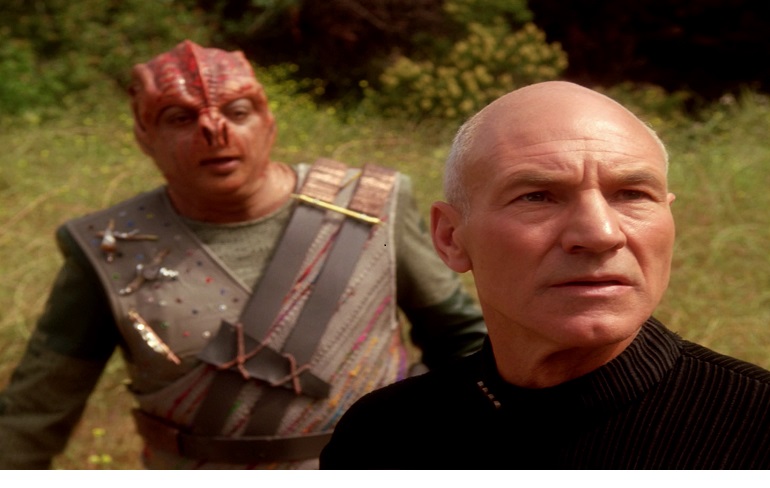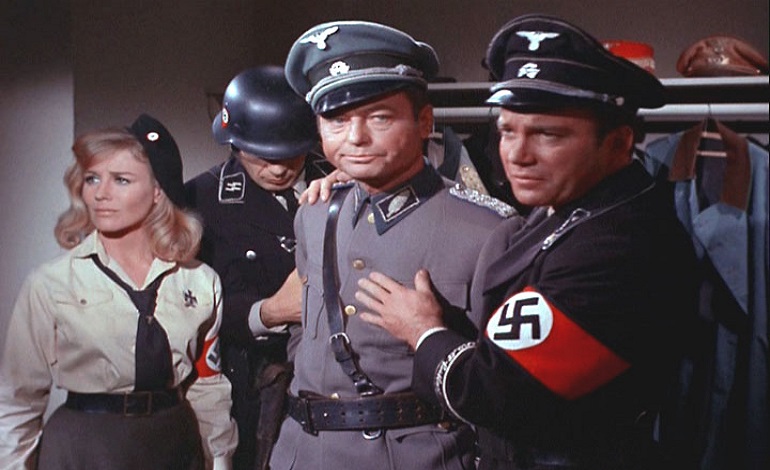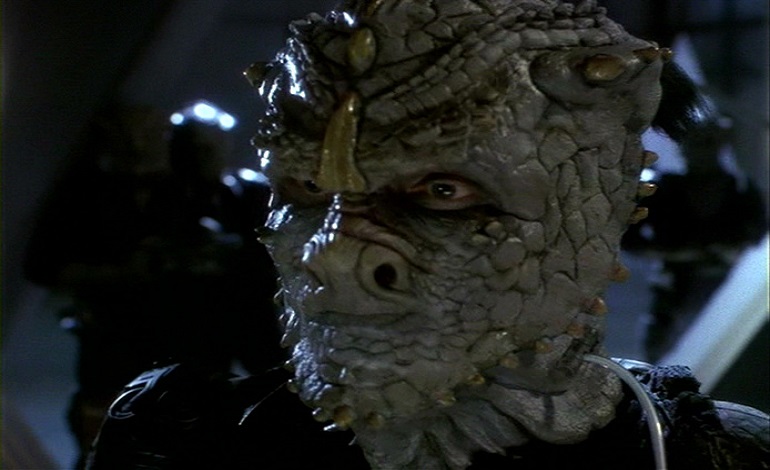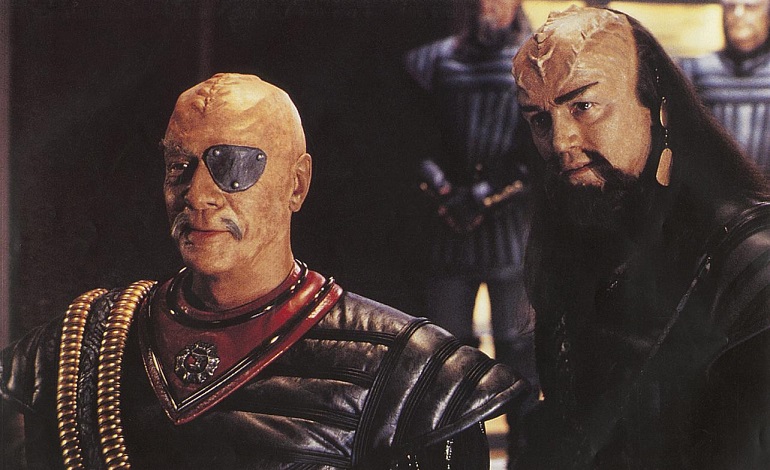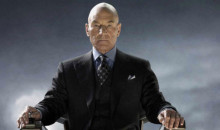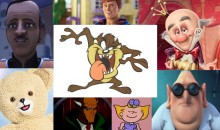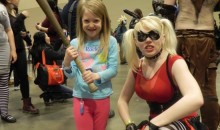Star Trek Lives In My Classroom
Star Trek lives in my classroom.
Actually, Star Trek should live in other classrooms, as well. I mean, as a teacher, I’m constantly looking for new ways of introducing curriculum-based subject material to my students that will keep their focus as well as illustrating the concepts I want to teach. As a lover of all things Trek, it’s a natural inclination for me to fall back on the world that Gene Roddenberry created. You put the two together and BAM: Instant synergy.
My name is Kirk. Say no more.
There are a great number of moments from Star Trek that can be used to introduce academic subjects and create those ideal teaching moments that every teacher is looking for, whether it’s a conversation starter or the framework for a summative assignment. I’m only going to look at five, but before you dismiss this as a mere justification of things geek, remember that this is the show that predicted personal hand-held communication, the tablet, and miniaturized computing. There has got to be something worth learning from this franchise if we just look at things a little closer. So let’s break it down by subject.
English
Specifically speaking, let’s talk literary devices. Just a few months back in English class, I taught my class about literary devices and I needed to illustrate the concept of metaphor. You remember the definition of a metaphor, right? A direct comparison of two unlike things? The Enterprise’s phaser-fire was a bolt of divine vengeance as it sliced through the Klingon D7 Battle-cruiser’s hull? You like that one?
Yeah, I just ripped that one off Star Trek. That’s what I do. John Kirk: teacher in the School of Geek.
But there was a great STTNG episode called “Darmok” that saw the entire episode rest upon the whole concept of metaphor as the basis for understanding. When Captain Picard and the Tamarian captain, Dathon, face a stalking monster together, Dathon tries to make Picard see this as a story from his planet’s folklore that they are repeating. Picard finally realizes that Dathon’s people communicate via the relating of these stories and their relevance to the current context. They communicate in metaphor.
That’s a pretty cool concept. I mean, poetry elevates language to different modes of understanding, but try relating that to 14-year olds. This episode not only provides a demonstration of how metaphor works, but it also does it in a practical and entertaining manner.
Also, the run-time on the episode is about 46 minutes long; just perfect for a period of watching and a follow-up period of discussion next day.
Whoo hoo! Now my students understand metaphor and I. Am. A. God. Of. English.
How about this one for literature? “Who Mourns for Adonis” in the second season of Star Trek: The Original Series (STTOS) is about an alien being that once lived on Earth a few thousand years in the past, who, along with his companions, thought to be gods by the ancient Greeks. The crew of the USS Enterprise encounter Apollo on his “retirement” planetoid as he waits for his children to come home.
In order to understand this episode, it helps if students have a working knowledge of classic Greek mythology. Apollo mentions his family – the other gods in the pantheon in addition to a little bit of classical civilization. This is an exciting conversation starter in beginning for any unit on Mythology.
History
There are at least three more STTOS episodes that come to mind when thinking about introducing historical periods in class. In “Patterns of Force” we see an alien planet influenced by a Federation historian who hoped to improve the planet’s rate of development by teaching the natives about twentieth century Nazi Germany.
Of course, this is a bad idea, and the planet immediately goes to war with its neighbouring planet by adopting the same type of martial and racial superiority the Nazis possessed. Still, it’s a valuable introduction because Spock proposes the thesis that in a span of twenty years, this humiliated, economically-depressed and war-battered nation rebuilt itself to poise mere steps away from world domination through discipline and rigid adherence to doctrinal thinking.
It’s a tremendous opportunity to invite discussion, not only about a World War Two topic in particular, but a chance to explain why History is studied in the first place. It also helps to introduce the concept to students about using information from the past to help us make decisions about the future.
Oh, the miracle of Star Trek.
Arguably, one of the greatest TOS episodes was “The City on the Edge of Forever”, in which we are introduced to one of Kirk’s greatest loves – Edith Keeler. Set in the years of the Great Depression of the 1930’s, Kirk has to rescue Dr. McCoy, lost in time and not in his right mind. McCoy saves Edith Keeler from a fatal car accident and accidentally changes the course of history, resulting in the disappearance of the Federation. Edith Keeler – a social worker – becomes very influential in American politics, keeping the USA out of World War Two and delaying Earth’s social advancement.
A bit of a stretch and yes, a tad Ameri-centric, but it really is a visible illustration of cause and effect. It’s a good lesson starter on the idea that one person can initiate a series of events that can have significant changes upon the world. You can tie this into movements like the “Me to Us” campaigns that have had a major influence upon students started by one person (Craig Kielberger).
One of my favourite historic Star Trek episodes is “Assignment: Earth”. It’s known that this was a failed pilot episode for a new television show about two human operatives sponsored by aliens who want to secure Earth’s future through positive development. It was unfortunate that it was never picked up but still managed to start Terri Garr’s acting career.
The Enterprise slingshots back through time to study how the Earth survived the arms race of 1968. This alone is awesome. First of all, to the millennial students that I teach, the concept of growing up in the threat of potential nuclear war is such a foreign one; you have to teach them about the poor relations between the East and West in the twentieth century after World War Two. You have to make them understand the concept of Mutual Assured Destruction and Nuclear Deterrent. It’s an amazing opportunity to show them how the world was polarized into two camps and why the Americans had so much influence in the world today.
Seriously – all this from just one episode of a science fiction television show that only lasted three seasons? Star Trek is a gold mine to educators! You see, it’s entertainment, for sure, but it’s also entertainment based on real world concepts and issues that have merit in today’s world and therefore, classroom. I mean, let’s talk good decision making. This forms part of the curriculum (at least where I’m from) of the subject of Health and Physical Education.
Health
One of the most important aspects in teaching the Health curriculum is making good decisions. This is critical for relationship building, avoiding undue peer pressure, staying clear of drugs and other substances that can have detrimental effects on a student’s welfare. Of course, these are all issues that a young teen has to encounter in adolescence and can be completely observed and understood by watching Star Trek.
Look at Star Trek: Deep Space Nine’s villains: The Dominion. The muscle of the Founders – the Jem H’adar – is dependent on a drug called ketracel white. Without it, they lose all inhibition, judgement and are completely dependent upon the Vorta and obey all their orders, unquestioningly. It’s a really way to show kids just how powerful drug dependency can be. I mean, the Jem H’adar fear NOTHING. They are the ultimate shock troops who walk into a battle with the idea that they are already dead. Therefore, when confronted with the enemy, they have nothing to lose. You would think these guys would be strong enough to throw the monkey of their collective backs. But for a few vials of the stuff every day, they’ll rip out their intestines to strangle their enemies. Drugs are bad, kids.
It’s the same thing with the STTOS episode “The Naked Time”. In this episode, the crew is infected with a virus that removes all inhibitions and subdues better judgement. It’s sort of like the whole ship is on a massive campus quad party binge-fest and is essentially useless for about a weekend. Of course, what better way to demonstrate the effects of alcohol abuse? If you are so completely hammered that the prospect of being dragged down to destruction by the increasingly powerful gravity of a disintegrating planet doesn’t faze you in the least, then this can teach kids that the similar effect of too much alcohol is a damn, scary thing.
Science
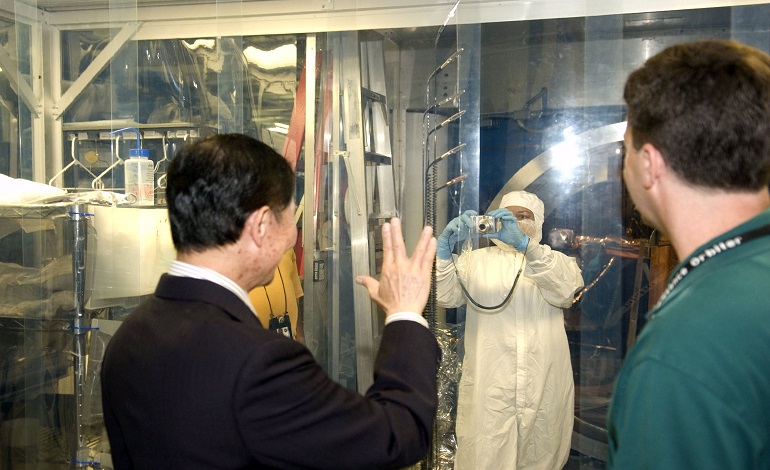
George Takei, “Sulu” from the original Star Trek series, salutes a NASA employee with the “live long and prosper” hand gesture during a 2008 visit to the Goddard Space Flight Center in Maryland. Credit: NASA/Bill Hrybyk
Okay, admittedly Star Trek is not a recognized resource for teaching the practical sciences. Still, as a kid, the idea of moving faster than light seemed completely feasible to me where warp engines are concerned, so I started to read more about space travel, the properties of a zero-gravity environment and Einstein’s concept of relativity. Why? Because these were the practical bases that the theories behind 23rd and 24th century technology were built on. I wanted to know more, so I began my own inquiry.
It’s the desire to learn that teachers want to capitalize on, not the process, actual content or rote memorization of facts. If a kid gets inspired by a science fiction television show to want to know more about the world around her, then by all means, let her continue to watch the show.
Heck, in a unit on water conservation, I’ve asked kids to create designs of futuristic water filtration devices. They have to understand and demonstrate the necessary elements in the process behind filtration (e.g. chemical addition, micro-bacterial filters, UV light, etc.) in their designs first, but the actual device itself has to be something that they might find in a science fiction story. For example, imagine a world, devastated by nuclear fall-out – how are they going to purify water in that type of an environment? It’s amazing what kids will come up with if you just allow them the opportunity to dream and have fun with science.
That’s Star Trek. It allowed an entire generation to think about the applications of science. It allowed women to think about being engineers and astronauts: Julie Payette, Roberta Bondar and other women in this generation who watched and grew up with Star Trek. Think about the first space shuttle: Enterprise. If that isn’t a practical example of science and technology being inspired by science fiction, then I don’t know what is.
Drama
The best actors in Star Trek all got their start in classical theatre backgrounds. A lot of them were Shakespearean actors who could grasp the extremity of Star Trek because of their roles in Shakespeare’s plays. William Shatner, John Colicos (Kor from STTOS and STDS9) and Academy Award winner, Christopher Plummer (General Chang from Star Trek: The Undiscovered Country) were all thespianic colleagues who performed at Canada’s Stratford Festival together.
When you try to teach kids to overcome their awkwardness and perform dramatic pieces; to get them to immerse themselves in a role, all you have to do is point a finger at these guys! The fact that two of them have a couple of kilos of plastic cement and make-up plastered all over them demonstrates the willingness to perform regardless of how uncomfortable they might be.
Also, think about the actors who have played aliens in this franchise. Jeffrey Coombs (Weyoun from STDS9) not only has a Shakespearean background (he performed at the California Shakespeare Festival) but he has a pronounced history in performing horror roles (Herbert West in Re-Animator) as well. Coombs is an actor who likes to primarily play inhuman, monstrous roles. This level of extremity teaches students of Drama about characterization and repertoire.
Why is it cool to be in Drama? God’s tears – just look at Patrick Stewart. I’m a William Shatner fan, but by God, this veteran of the British screen and stage manages to illicit admiration for his sci-fi geek status in playing Captain Picard AND Professor Xavier of X-Men fame, while also being a voice for social justice in speaking out on preventing violence against women. On top of all this, my teenagers would recognize his voice as the voice of Stan’s CIA boss on the animated series “American Voice”. In my years of teaching, I’ve learned that coolness is a universal currency that all students can appreciate in approaching any subject.
So those are five areas that any teacher can look to Star Trek for inspiration. Star Trek is an extreme view of the human experience. Roddenberry wanted us to look at ourselves through the lens piece of the 23rd century and consider what we are doing right and wrong in the world and how we, as humans, can aspire to be better. Isn’t that just what teachers want from their students? In the microcosm of the classroom, students represent humanity and teachers play that role in coaching them to be their best. It’s only (excuse the expression) logical that teachers can draw from Star Trek to better illustrate their lessons.
After all, teachers want their students … engaged.

